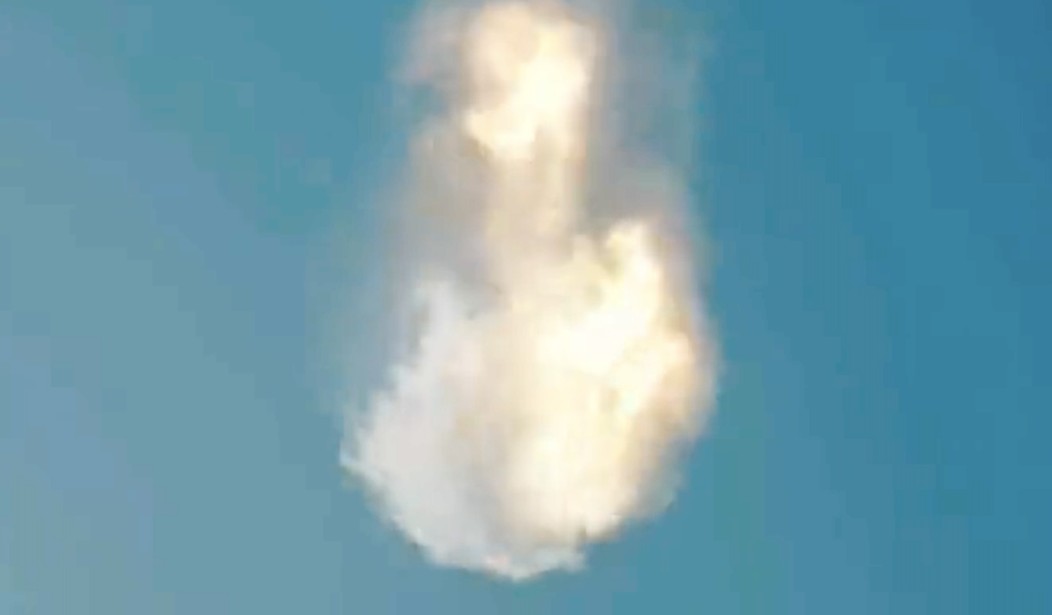The launch of SpaceX’s first Starship orbital test flight was glorious — the largest, most powerful rocket ever to fly. After a brief halt and reset during the last few seconds of the countdown, the unmanned Starship + Super Heavy stack lifted off like nothing ever before. To my eyes, it looked like a magical hybrid: The bottom half, pure Saturn V; the top half, pure science fiction.
Here’s the successful launch:
Liftoff of Starship! pic.twitter.com/4t8mRP37Gp
— SpaceX (@SpaceX) April 20, 2023
When it took off at 9:34 a.m. Eastern this morning, Starship took off in a glorious rush. About six of the rocket’s 33 engines either failed to ignite or failed shortly after liftoff, but there’s enough redundancy to account for such failures. But then four minutes later, near second stage separation, something went wrong. The whole stack started to shimmy and then spiral. Finally, Starship began descending into the thicker atmosphere where it exploded in what rocket scientists call a “rapid unscheduled disassembly,” or RUD.
Starship Super Heavy has experienced an anomaly before stage separation! 💥 pic.twitter.com/MVw0bonkTi
— Primal Space (@thePrimalSpace) April 20, 2023
The explosion was glorious, too, if (ahem) somewhat unintended.
SpaceX founder and CEO Elon Musk initially rated Starship’s chances of a successful test flight at just 50%. “I’m not saying it will get to orbit, but I am guaranteeing excitement,” he said at a Morgan Stanley conference in March, adding that the test “Won’t be boring!”
It certainly wasn’t boring. I live-streamed the event with Bill Whittle and Scott Ott, and we sounded like excited 12-year-olds when we weren’t all holding our breath.
Thursday’s flight was a re-do after the initial test flight on Monday was scrubbed due to a faulty pressurization valve. The plan was to drop the Super Heavy first stage in the Gulf of Mexico and for the Starship second stage to achieve orbit and then make a water landing near Hawaii.
Neither stage was meant to be recovered. Instead, each was meant to crash in order to discover exactly how such an impact would affect each brand-new vehicle.
Succeed or fail, “SpaceX intends to collect as much data as possible during flight,” Musk said in March. And that’s been his attitude towards every test flight: Fail, Learn, Iterate, Succeed. The process has, thanks to the workhorse Falcon 9 launch vehicle, reduced the costs to put a kilo of mass in orbit by a whopping 40%. Starship, if and when it becomes fully operational, will reduce that cost further by an order of magnitude.
“With SpaceX already looking ahead to the next test flight,” the New York Times reported, “it’s worth noting that the launchpad appears largely intact after the enormous rocket lifted off, and engineers will have a trove a data from Starship’s roughly four-minute flight to figure out what didn’t work.”
So when will SpaceX try again? Musk himself left a clue shortly after this morning’s RUD:
Congrats @SpaceX team on an exciting test launch of Starship!
Learned a lot for next test launch in a few months. pic.twitter.com/gswdFut1dK
— Elon Musk (@elonmusk) April 20, 2023
I’d expect the tempo of test flights to increase rapidly after this next one. Now that the FAA’s regulatory hurdles are out of the way, the production and iteration rate of further Starship prototypes might be the only real brake on flight tempo.
Maybe the next flight makes it to Hawaii. Or maybe not. But once again, it won’t be boring.
Recommended: Biden’s CHIPS Act and Taiwan Semi: What If They Gave Away $53 Billion, but Nobody Wanted It?










Join the conversation as a VIP Member